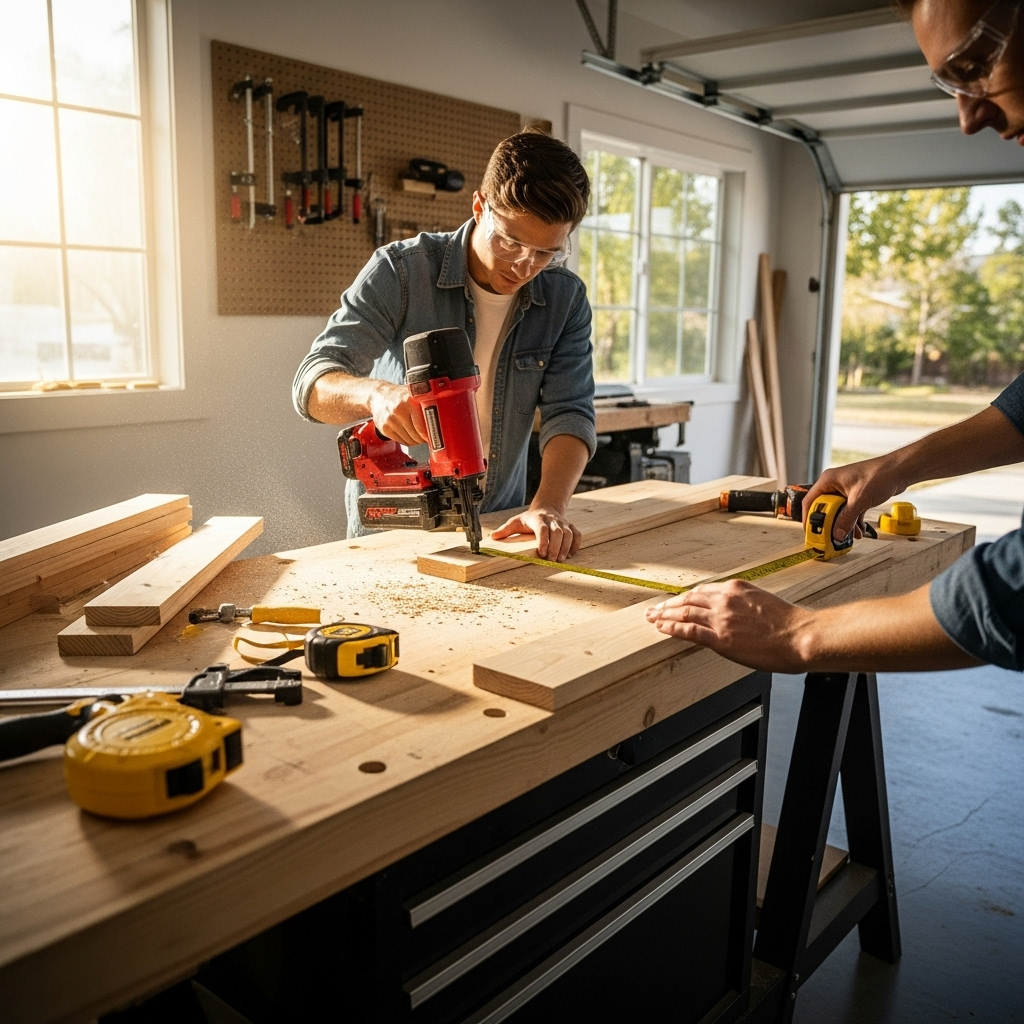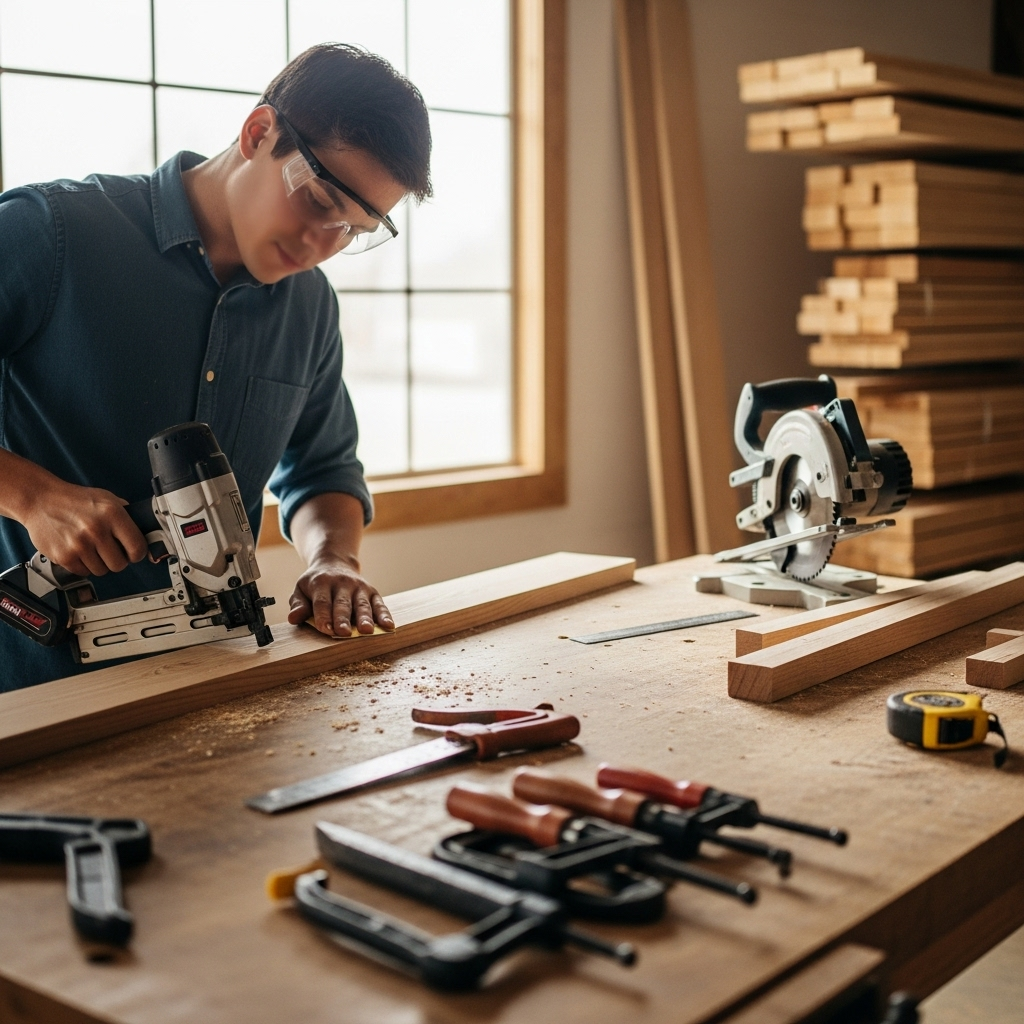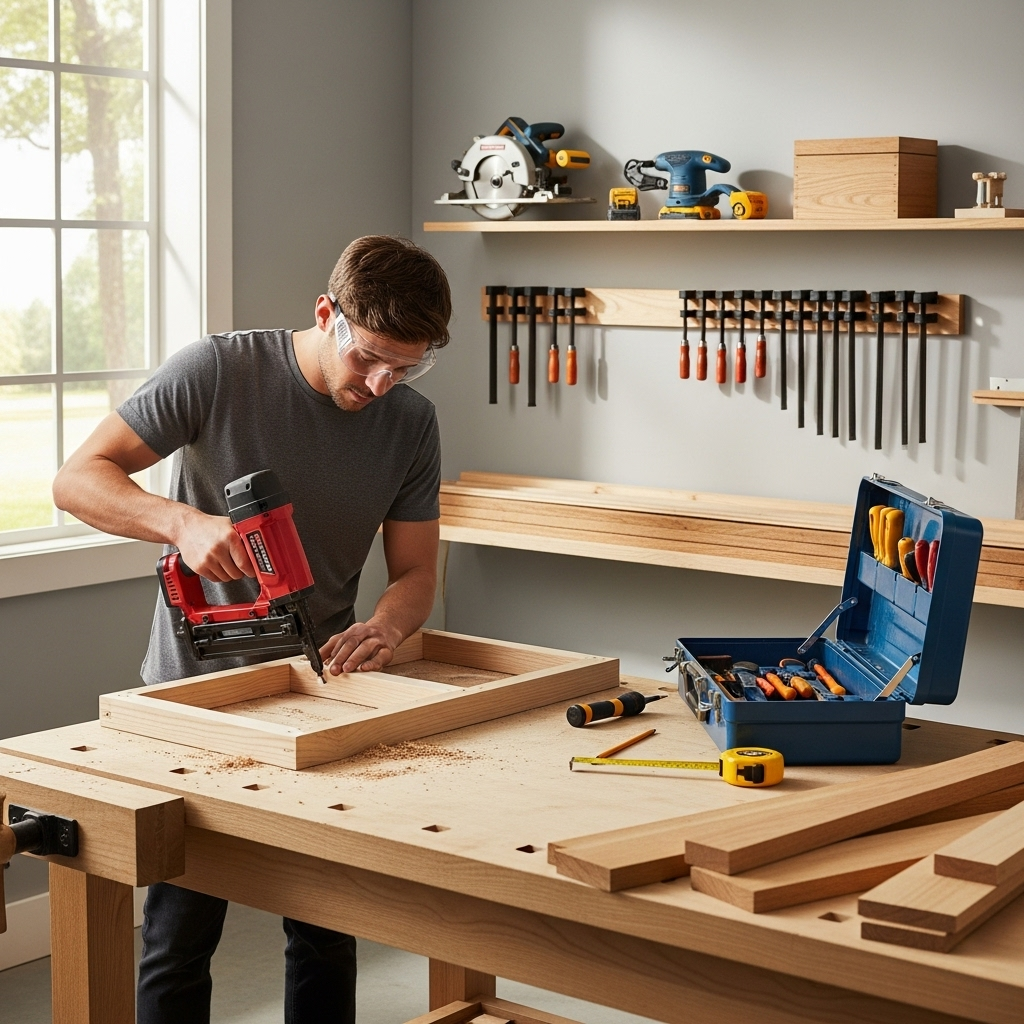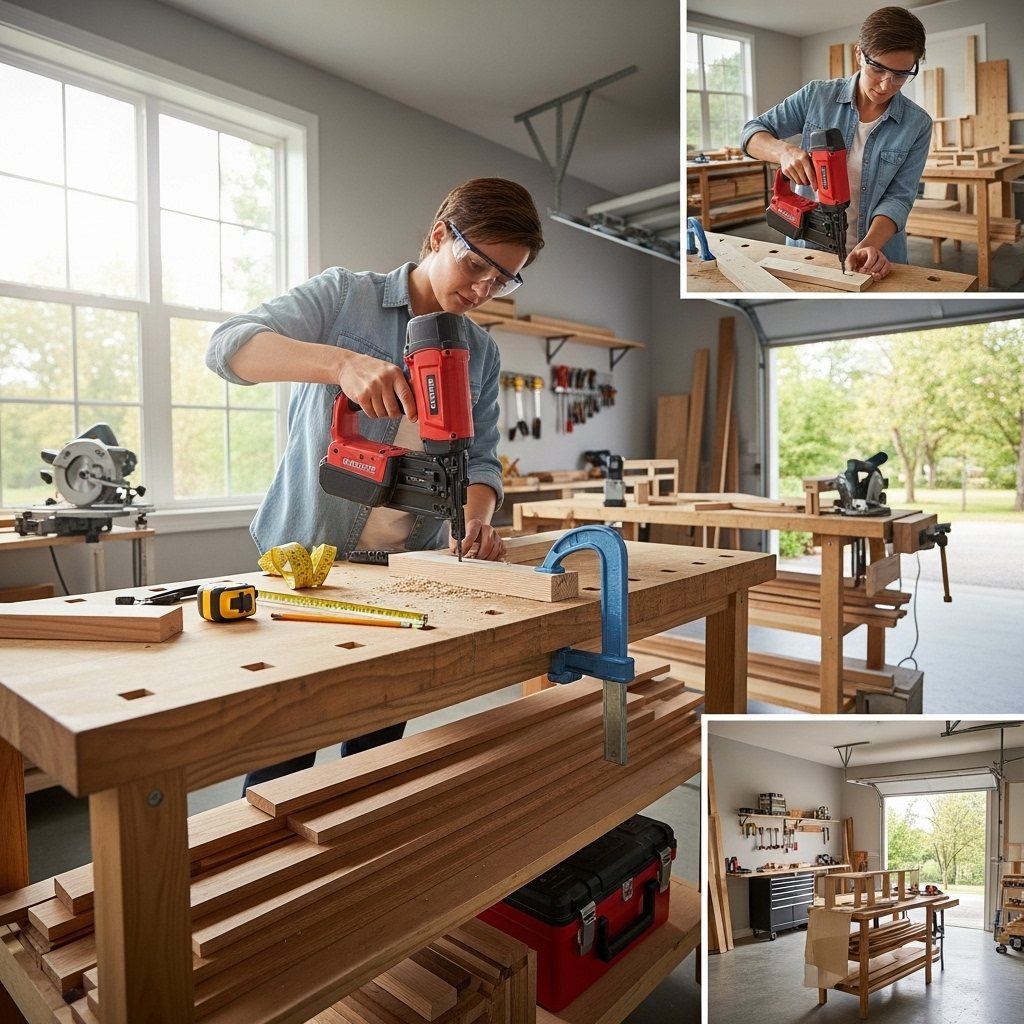Wood flooring oak is a timeless, durable, and beautiful choice for any home. Its classic appeal and strength make it a smart investment, offering stunning aesthetics and lasting value for DIYers and homeowners alike.
When you’re thinking about a new floor, you want something that looks great and will last. Wood flooring, especially oak, is a popular choice for a reason. It’s tough, it looks amazing, and it adds real value to your home. But with so many options, how do you know if oak is right for you? Don’t worry! I’m Jack Shaffer, and as Nailerguy, I’ve helped countless folks figure out their flooring needs. This guide will walk you through why oak wood flooring is such a fantastic option, what to look for, and how it can transform your space, making your DIY project a success.
Table of Contents
Why Oak Wood Flooring Stands Out
Oak has been a go-to material for durable goods for centuries, and for good reason! It’s a hardwood that’s incredibly strong and resistant to dents and scratches. This makes it perfect for floors that get a lot of foot traffic, like in busy hallways or family rooms. Plus, oak has a natural beauty with its distinct grain patterns that can really make a room feel warm and inviting.
Think of it like choosing the right nailer for a job; you want something reliable and hardworking. Oak flooring is just that for your home. It’s a choice that combines stunning looks with lasting practicality.
The Unmatched Beauty of Oak
Oak’s natural patterns are unique. This variation means no two floors will ever look exactly the same, giving your home a custom feel. The color of oak can range from very light to a deep, rich brown, and it takes stains beautifully. Whether you’re going for a modern, minimalist look or a cozy, rustic vibe, there’s an oak floor to match. The way light plays off the wood grain brings a natural warmth that carpet or laminate just can’t replicate.
Durability You Can Count On
Oak is classified as one of the harder domestic woods. This natural hardness means it can stand up to everyday life.
Here’s a quick look at its durability compared to other common flooring materials:
| Flooring Material | Janka Hardness Rating (lbs) | Relative Durability |
|---|---|---|
| Oak (Red) | 1290 | Very Durable |
| Oak (White) | 1360 | Very Durable |
| Maple | 1450 | Extremely Durable |
| Walnut | 1010 | Moderately Durable |
| Pine (Southern Yellow) | 690 | Less Durable |
| Laminate | N/A (wear layer varies) | Varies (can be prone to scratching) |
| Vinyl Plank | N/A (wear layer varies) | Good (scratch resistant) |
The Janka hardness test measures the resistance of wood to denting and wear. A higher number means a harder, more durable wood.
This makes oak a smart, long-term investment for any homeowner. It’s like using a heavy-duty nailer for framing; you know it’s going to get the job done right and last.
Adding Value to Your Home
A well-chosen wood floor, especially oak, is a significant selling point. It’s a feature that many homebuyers actively seek out. It signals quality and good taste, which can help your home stand out in the market and potentially command a higher price. You’re not just choosing a floor; you’re investing in your home’s future value.
Understanding Oak Wood Flooring Types

When you look at oak wood flooring, you’ll notice there are a couple of main categories: solid oak and engineered oak. Both offer the look and feel of oak, but they’re constructed differently, which impacts their suitability for different areas and installation methods.
Solid Oak Flooring
Solid oak flooring is exactly what it sounds like: planks milled from a single piece of solid oak wood.
Pros of Solid Oak:
- Longevity: Can be sanded and refinished many times over its lifetime, essentially lasting forever if cared for properly.
- Natural Beauty: Offers the authentic, natural look and feel of solid wood.
- Repairability: Individual boards can often be replaced if severely damaged.
Cons of Solid Oak:
- Moisture Sensitivity: Prone to expanding and contracting with changes in humidity and can be damaged by excessive moisture. Not ideal for basements or bathrooms.
- Installation: Typically requires nailing or stapling to a subfloor, which can be more labor-intensive for DIYers.
- Cost: Can be more expensive upfront than engineered options.
Engineered Oak Flooring
Engineered oak flooring is a more modern solution. It’s made of several layers. The top layer, or “wear layer,” is real oak, showcasing the wood’s natural beauty. Beneath that are layers of plywood or high-density fiberboard (HDF).
Pros of Engineered Oak:
- Stability: Much more resistant to changes in humidity and temperature than solid wood, making it suitable for more areas, including basements.
- Versatile Installation: Can often be glued down, floated (connected to itself), or even nailed down, offering more DIY-friendly options.
- Wear Layer Options: The thickness of the oak wear layer determines how many times it can be sanded and refinished (if at all), offering good longevity.
Cons of Engineered Oak:
- Refinishing Limitations: The number of times it can be sanded and refinished depends on the wear layer thickness. Very thin wear layers may not allow for multiple refinishes.
- Authenticity Debate: While the top layer is real oak, some purists argue it’s not as “authentic” as solid wood (though most people can’t tell the difference).
Oak Grain and Color: What to Expect
Oak comes in two main species, Red Oak and White Oak, and their names refer to the color and tannin content, not necessarily their color when milled. Both are excellent hardwearing choices for flooring.
Red Oak
Red oak has a warmer tone. Its grain patterns can be quite prominent, ranging from straight lines to more varied, “cathedral” patterns. The color can vary from a light pinkish-brown to a medium, reddish-brown. It’s a classic choice that’s very forgiving.
White Oak
White oak generally has a cooler, grayer tone than red oak. Its grain patterns tend to be a bit more subtle and straighter. It’s also known for being slightly harder and more resistant to moisture due to its closed cellular structure. This makes it a superb choice for areas where humidity might be a concern.
Exploring Finishes and Stains
The beauty of oak is how well it accepts finishes. You can embrace its natural color or alter it completely with stains.
- Natural Finish: Lets the wood’s inherent color and grain shine through. This is often a clear coat that protects the wood.
- Light Stains: Think of honey, beige, or natural ash tones. These brighten the space and highlight the wood’s texture.
- Medium Stains: Walnut, medium brown, or saddle tones add warmth and depth, a classic look that works with many decors.
- Dark Stains: Espresso, ebony, or deep grey stains provide a dramatic, elegant appearance. These can show scratches more readily but offer a sophisticated vibe.
- Distressed or Reclaimed Look: These finishes mimic aged or weathered wood, adding character and a rustic charm.
When choosing a finish, consider the light in your room and your overall decor. For a brighter feel, go lighter. For a cozier atmosphere, darker shades work well.
Installing Your Oak Wood Flooring: A Beginner’s Guide

Installing wood flooring, whether solid or engineered, is definitely a DIY-friendly project, but it requires patience and the right tools. Think of it like laying out your cuts for a project – precision matters!
Step 1: Preparation is Key
Before you even think about laying planks, your subfloor needs to be perfect. It should be clean, (very important!) dry, and level. Any bumps or dips will show through your new floor, and moisture is the enemy of wood.
Clean the Subfloor: Sweep and vacuum thoroughly. Remove any old adhesive, nails, or staples.
Check for Levelness: Use a long, straight edge or a level tool. High spots can be sanded down, and low spots might need a leveling compound. The National Wood Flooring Association (NWFA) provides excellent resources on subfloor preparation and moisture testing, which is a critical first step. Check out their technical resources for detailed guidance.
Acclimate the Flooring: This is super important! Wood expands and contracts. You need to let your boxed flooring sit in the room where it will be installed for at least 48-72 hours (or longer, depending on manufacturer instructions). This allows the wood to adjust to your home’s temperature and humidity.
Step 2: Laying the First Plank
This is where your flooring project really begins. You’ll want to start along the longest, straightest wall in the room. Always leave a small gap (usually 1/2 inch to 3/4 inch) between the wall and the plank. This is for expansion. You can create this gap using spacers.
Position the Plank: Place your first plank with the tongue side facing away from the wall.
Secure the Plank:
For solid hardwood, you’ll typically use a flooring nailer or stapler that drives fasteners through the tongue of the board into the subfloor. This requires a specific tool, similar to how you’d use a finish nailer for trim.
For engineered wood, depending on the type, you might use a nailer/stapler, adhesive, or the “floating floor” method where planks lock together and aren’t attached to the subfloor.
Step 3: Continuing the Installation
Work your way across the room, plank by plank. You’ll typically connect the next plank to the first by angling its tongue into the groove of the previous board and then pressing it down.
Stagger Your Joints: For strength and appearance, make sure the end joints of your planks aren’t all lined up. Aim for at least a 6-inch stagger. This means starting your second row with a plank cut to a different length than the first. You can often use the offcut from the end of one row to start the next.
Use a Pull Bar: When planks are snugged up, especially at the end of a row or against a wall, a pull bar is essential. It’s a strong metal bar that hooks onto the tongue and allows you to tap the plank tightly into place without damaging it.
Step 4: Cutting and Fitting Around Obstacles
You’ll inevitably run into doorways, vents, and corners. This is where a jigsaw or a miter saw (for straight cuts) comes in handy.
Doorways: You’ll usually “undercut” the door jamb. This means cutting the jamb so the flooring can slide underneath it, creating a clean, seamless transition.
Obstacles: For vents or pipes, you’ll need to carefully measure and cut your planks to fit around them, leaving that necessary expansion gap.
Step 5: The Final Touches
Once you’re almost done, you’ll have rows of planks that need to be cut to fit the remaining space. You might need to rip a plank lengthwise (cutting along the length of the board) to fit a narrow gap.
Remove Spacers: Once the floor is installed, remove all your spacers.
* Install Baseboards and Trim: These cover the expansion gap and give your floor a finished look. You can use a finish nailer to attach them securely.
Essential Tools for Oak Flooring Installation
As your friend in tools, I always say having the right equipment makes any job easier and safer. Here’s what you’ll likely need for installing oak flooring:
- Measuring Tape: For accurate measurements, especially for cuts.
- Pencils: For marking your cuts.
- Utility Knife: Handy for scoring and cutting certain underlayments.
- Pry Bar: For minor adjustments or removing existing flooring.
- Hammer: A sturdy one for tapping planks into place.
- Flooring Nailer or Stapler: Essential for solid hardwood. For engineered, check if adhesive or a no-nail system is better. You can often rent these tools if you don’t want to buy.
- Miter Saw: For making clean, precise crosscuts (across the width) of planks.
- Jigsaw: Essential for cutting curves or irregular shapes around obstacles.
- Tapping Block: Protects the edges of your planks when you’re tapping them together.
- Pull Bar: As mentioned, crucial for getting the last planks in a row tight.
- Spacers: To maintain the expansion gap along walls.
- Safety Glasses: Always protect your eyes!
- Work Gloves: To protect your hands.
- Knee Pads: You’ll be on your knees a lot!
Maintaining Your Oak Wood Floor

Keeping your oak floor looking its best is straightforward, but consistency is key. Regular, simple care will ensure its beauty for years to come.
Daily/Weekly Care:
- Sweep or Vacuum: Use a soft-bristle attachment on your vacuum cleaner or a dust mop to pick up dirt, dust, and grit. These small particles can act like sandpaper over time.
- Wipe Up Spills Immediately: Wood and liquids don’t mix well. Blot spills with a soft, absorbent cloth.
Monthly/As Needed Care:
- Damp Mopping: Use a specially formulated wood floor cleaner and a damp (not wet!) mop. Wring out the mop extremely well. Too much water can damage oak. Follow the cleaner’s instructions, and always test in an inconspicuous spot first.
- Protective Pads: Place felt pads on the legs of all furniture to prevent scratches. Even small shifts can cause damage, so check these pads periodically and clean or replace them as needed.
Repair and Refinishing:
- Minor Scratches: For very light scratches, sometimes a specific wood repair pen or wax crayon in a matching color can work well for DIY touch-ups.
- Deep Scratches or Wear: Solid oak and engineered oak with a thicker wear layer can be sanded down and refinished. This is a more involved process, often best left to professionals, but it can completely restore a worn floor.
It’s important to avoid harsh chemicals, steam mops (which introduce too much moisture), and abrasive cleaners. Stick to products designed specifically for hardwood floors.
Frequently Asked Questions About Oak Wood Flooring
Here are some common questions beginners have about oak flooring.
What is the Janka hardness rating for oak, and why does it matter?
Oak typically has a Janka hardness rating between 1290 (Red Oak) and 1360 (White Oak). This rating measures how resistant the wood is to denting and wear. A higher number indicates a harder wood, meaning it will stand up better to foot traffic, pets, and dropped items, making it a durable choice for flooring.
Can I install oak flooring in my kitchen or bathroom?
Solid oak is generally not recommended for kitchens or bathrooms due to its sensitivity to moisture and humidity changes, which are common in these areas. Engineered oak, however, is much more stable and can be a suitable option for kitchens, provided spills are cleaned up immediately. For bathrooms, waterproof flooring is usually the safest bet.
How much does oak flooring cost?
The cost of oak flooring can vary significantly based on whether it’s solid or engineered, the grade, species (Red vs. White Oak), width of the planks, and the finish. Generally, you can expect to pay anywhere from $3 to $12+ per square foot for the material itself. Installation costs will add to this, depending on whether you DIY or hire a professional.
Is oak flooring difficult to maintain?
No, oak flooring is surprisingly easy to maintain. Regular sweeping or vacuuming with a soft brush attachment, and occasional damp mopping with a wood-floor-specific cleaner, are usually all that’s needed. Promptly drying up any spills is the most crucial part of maintenance to prevent damage.
How long does oak flooring typically last?
With proper care and maintenance, solid oak flooring can last a lifetime, often 50 to 100 years or even more. Engineered oak’s lifespan depends on the thickness of its wear layer; floors with thicker wear layers can be sanded and refinished a few times, extending their life considerably.
What’s the difference between Red Oak and White Oak flooring?
